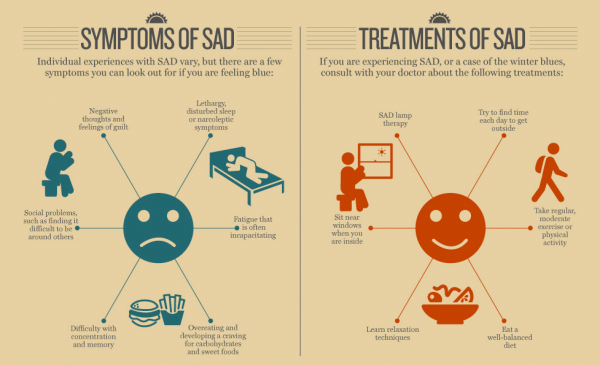
Shaina Toomey, MSPT, Director of Rehabilitation Services, Fresh River Healthcare Center
(appeared in the Windsor Locks Journal, Windsor Journal and Bloomfield Messenger)
Seasonal Affective Disorder
You may be asking, “what is seasonal affective disorder?”. Do not feel bad, many people have never heard of this category of depression.
According to the National Institute of Mental Health (NIMH) the definition of Seasonal Affective Disorder (SAD) is a type of depression that comes and goes with the seasons, typically beginning in late fall or early winter months and going away in the spring and summer. Often it can also be known as the winter blues or seasonal depression. Depressive symptoms can also be tied to the summer season change but are less common.
Some symptoms that may be seen with SAD are lack of interest in activities, sleeping to much, weight gain, feelings of hopelessness, difficulty with concentration and social withdrawal just to name a few. Experts have not found one specific cause for SAD but have identified a few factors based on lack of sunlight that play a role:
- Seasonal changes and increased darkness can affect your melatonin levels and result in sleep pattern changes and changes in mood.
- Lack of sunlight can have effects on your biological clock, changing your body’s natural rhythm triggering symptoms of depression.
- Lack of sunlight can cause a drop in serotonin levels in the brain which can trigger depression.
Anyone can suffer from Seasonal Affective Disorder but there are some indicators that have been identified to increase your risk: being female; having a prior diagnosis of depression; having a family history of SAD; age because generally younger people experience symptoms even children; and living further away from the equator related to decreased sunlight in the winter.
There are some natural ways to combat the symptoms of SAD. Light therapy has been found to be the best treatment, and has been the mainstay of treatment for SAD since the 1980s according to the NIMH. Other courses of action can be counseling, exercise, outdoor time, supplements or the use of antidepressant medications.
Now, feeling a little down one or two days can be quite normal. If you find that this pattern continues, note changes in behaviors, struggle with your normal routine, turn to alcohol or have thoughts of harming yourself - seek medical attention. Consulting your doctor for diagnosis and recommendations for treatment is important for successful management of SAD.

